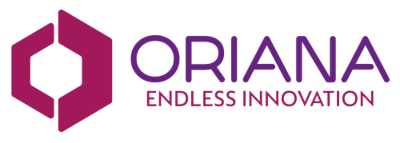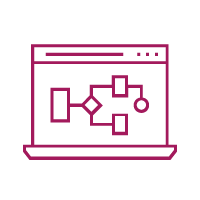Anyone running a company which relies on technology to deliver goods and services (in other words, anyone running a company) has to face the daily fear of what happens if core systems fall over. CTOs in particular lose a lot of sleep over this, because they are more aware than anyone of how compromised their legacy system is. The CEO and Board are demanding digital transformation, but where to begin? There are programmers and developers in-house, but not enough of them, and anyway they’re tied up with all the other stuff, like keeping the wheels on the bus.
Sure, there are vendors that can be brought in through the tendering process, but then how locked-in might you become? Naturally there are also whole teams of consultants who’ll be only too happy to come in and help keep a watchful eye on the suppliers, and add their own spin on your future digital strategies. Being something of a wise old bird however, you are ever so slightly suspicious that they won’t completely understand the real business use-cases that your company faces, day in, day out.
The people who really know…
There is one group of people who really do ‘get it’. They’re the employees, the folks who spend their working life wrestling with the system. Spend a little time with any of them, from back office to customer-facing roles, and they’ll quickly tell you what’s wrong, and what would need to be changed to make things ‘sing’. Many ordinary employees will probably never mention ‘digital transformation’ so much as repeating an endless snag list of if onlys: “If only the system would do this when I need it to…”
The answer? Those employees are actually not at all ‘ordinary’. In fact they are all secret ninjas, and it’s time to start using their power and leveraging their knowledge.
People power + low-code
No, please don’t laugh at the image of black clad, acrobatic young people as representing the workforce of your organization! That may not be the physical reality, but in fact there are considerable resources available to any company which decides to bring together the strengths of their own employees, coupled with the power of low-code solutions.
Low-code platforms such as Oriana’s Low-Code Platform allow business as usual to continue on the core system, while adding a whole range of customizable apps on top, to enable many new and enhanced features. The special ingredient on top of that comes when the workforce is brought into the equation. They know about workflows – even if they don’t call them that – and they know what they need the system to do. The beauty of low-code means that they can get what they want and need, efficiently, and safely.
Because platforms like Oriana Low-Code are intuitive and graphic, it’s simple to ‘taste and try’ set-ups -something which encourages collaboration and inter-departmental co-operation. And the concept of safety is of great importance: the Oriana low-code platform allows people to ‘play’ with business application templates before these become permanent. This encourages no-risk innovative approaches, because if an idea doesn’t work, the intuitive building-blocks are simply re-ordered and the workflow amended. Then once a concept is tried, tested and approved, it can be quickly and seamlessly adopted.
But do CTOs develop grey hair instead of worrying about their ‘ordinary’ workers making apparently innovative adjustments to the system? Perhaps at this point, we should mention Digital Natives and Citizen Developers – two buzzword sets of employees who really can be trusted to generally do the right thing. Citizen Developers are those people who do know how to code, to some extent, often by having a background in SQL (which also happens to be the low-code language of the Oriana Low-Code Platform. Digital Natives now comprise virtually anyone who doesn’t have grey hair in your organization – that is, the people who grew up with a smartphone and a tablet in their hands. Together, these people constitute a savvy, aware resource who know how to use technologies well, and responsibly. Of course, ultimately it will be down to a company’s IT department what to adopt, so we’re not talking anarchy – far from it!
For the rest of the not so tech-savvy workforce, they can still be included in the digital transformation process through the Oriana Studio app, which offers the graphic UI and building-block approach, with zero-coding abilities required. Once the no-code workflow is mapped out, it can be handed on to the low-code process, to further refine it.
So, are you a Citizen Developer, and do you have CDs in your organization? Undoubtedly, the answer is ‘Yes’. Anyone who understands the processes of their job, and how they could be improved is ready to make innovative changes, providing they are given the right, properly managed tools. The Oriana toolkit offers a comprehensive approach to digital transformation, especially when coupled with the unique knowledge and experience of the people who do all of the specific tasks in your company.
Look at them not only as your colleagues but as the secret ninjas that they really are.



